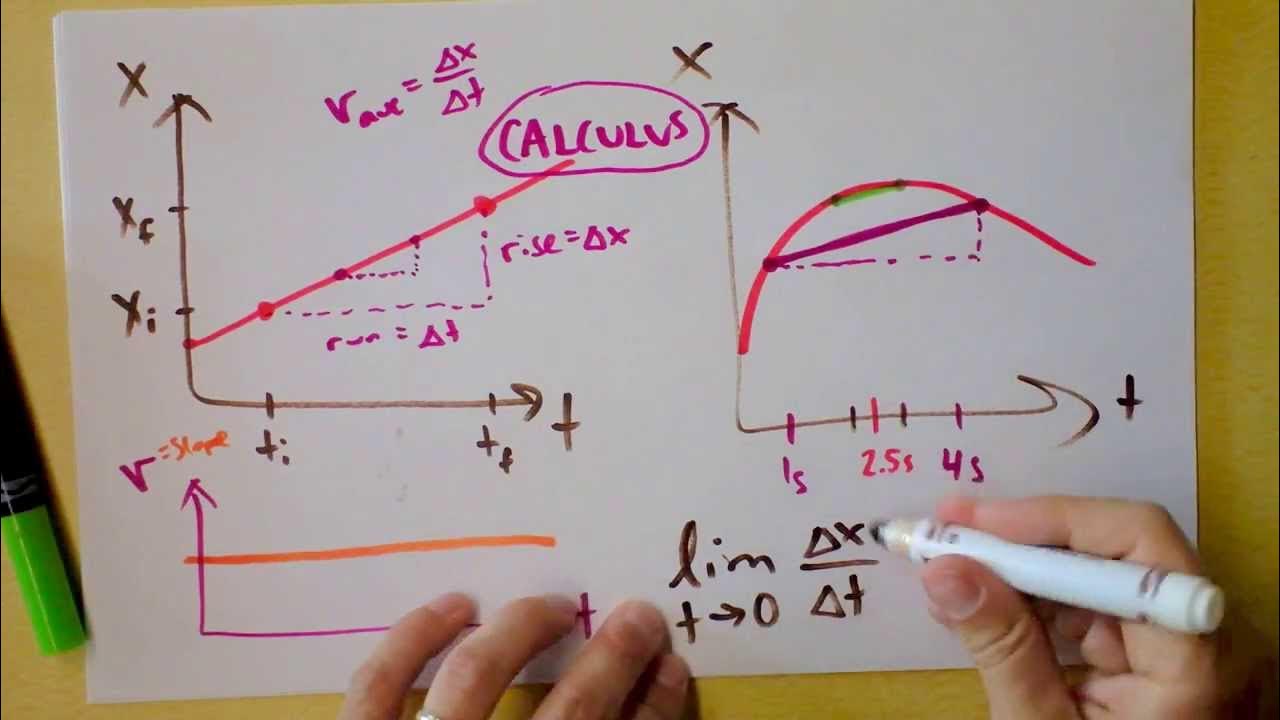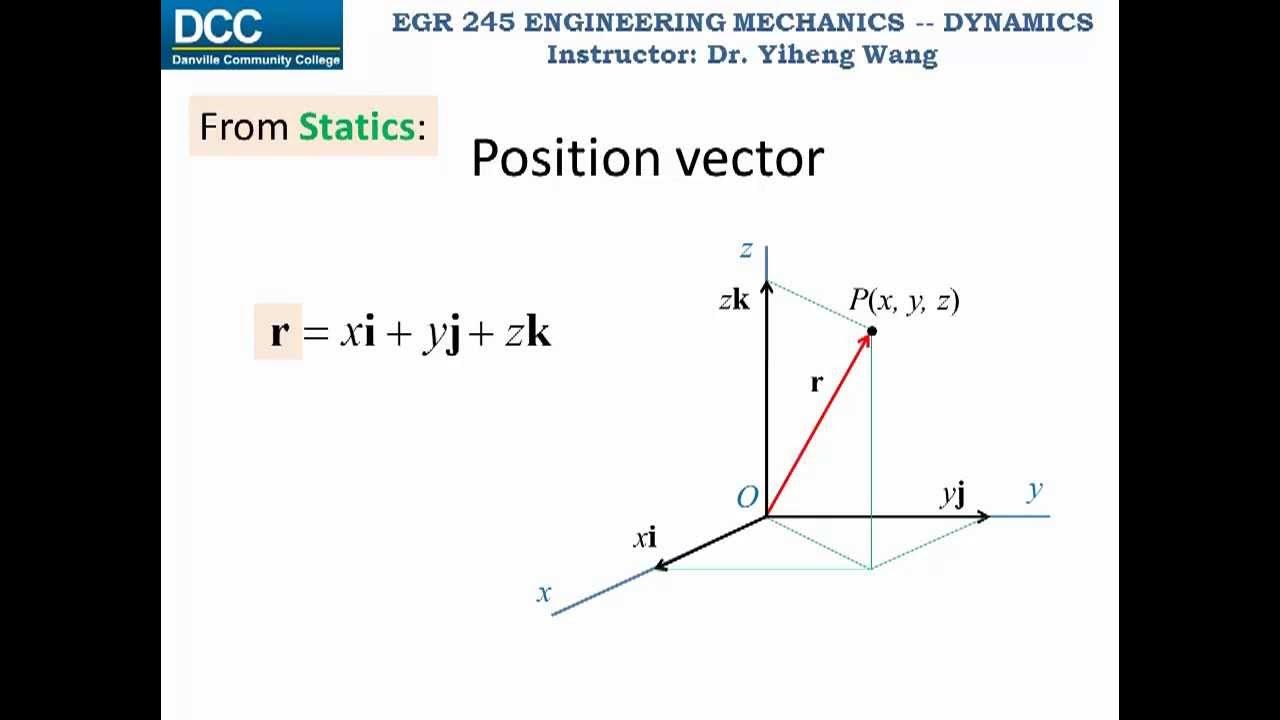Position/Velocity/Acceleration Part 1: Definitions
Summary
TLDRProfessor Dave's video script delves into the fundamental concepts of physics: position, velocity, and acceleration. He explains position as an object's location in space, velocity as the rate of change in position over time, and acceleration as the rate of change in velocity. The script distinguishes between scalars like distance and vectors like displacement and velocity, emphasizing their directional properties. Through relatable examples, Dave illustrates these concepts, making physics accessible and engaging. The script concludes with a practical demonstration of these principles in motion, reinforcing the importance of understanding both magnitude and direction in physics.
Takeaways
- 📏 Position in physics is defined as the location of an object in space, often measured from a reference point.
- 🚀 Velocity is the rate of change of position over time, and is a vector quantity, meaning it has both magnitude and direction.
- ⏱️ Acceleration is the rate of change of velocity over time, and like velocity, is also a vector quantity.
- 📏📐 Displacement is a vector that represents the change in position from the starting point to the final position, different from distance which is a scalar.
- 🛣️ Distance is a scalar that measures the total path length traveled, regardless of direction.
- 🔢 The Pythagorean theorem can be used to calculate the straight-line distance (displacement) between two points.
- 🏃♂️ Speed is the scalar quantity that measures how fast an object is moving, without considering direction.
- 🔄 Average speed is calculated by dividing the total distance traveled by the time taken, while average velocity is found by dividing the total displacement by time.
- 🚗 Acceleration can be constant or variable, and in the case of a car accelerating, it is the rate at which the car's velocity increases.
- 🛑 Deceleration is a form of acceleration in the opposite direction, such as when a car slows down or comes to a stop.
Q & A
What is the definition of position in physics?
-Position is the location of an object in space, usually discussed with reference to a point or axes, and can be expressed as a distance from a reference point in meters.
How is velocity different from speed?
-Velocity is the rate of change in position over time and is a vector, which means it has both magnitude and direction. Speed, on the other hand, is a scalar and only has magnitude without direction.
What does acceleration represent in physics?
-Acceleration is the rate of change in velocity over time and is always a vector because it must occur in a particular direction, indicating both the change in speed and the direction of that change.
Can you explain the difference between distance and displacement?
-Distance is a scalar quantity that represents the total path length traveled by an object, while displacement is a vector that represents the straight-line distance from the starting point to the endpoint, regardless of the path taken.
How can you calculate the average speed of an object?
-The average speed of an object is calculated by dividing the total distance traveled by the time it took to travel that distance.
What is the formula to calculate the average velocity?
-Average velocity is calculated by dividing the total displacement by the time taken to cover that displacement.
Why are velocity vectors important in kinematics?
-Velocity vectors are important in kinematics because they describe both the speed and the direction of an object's motion, which are crucial for understanding and predicting the motion of objects.
What is deceleration and how is it represented?
-Deceleration is a decrease in the velocity of an object, represented as a negative acceleration vector pointing in the opposite direction of the motion, indicating a reduction in speed.
How does the magnitude of a velocity vector change as an object slows down?
-As an object slows down, the magnitude of its velocity vector decreases, eventually reaching zero when the object comes to a stop.
Can you describe the visualization of displacement, velocity, and acceleration vectors for a rolling marble?
-For a rolling marble, the displacement vector elongates as it rolls, the velocity vector points in the direction of motion and decreases in magnitude until stopping, and the acceleration vector points in the opposite direction of motion, indicating a constant deceleration due to friction.
Outlines

This section is available to paid users only. Please upgrade to access this part.
Upgrade NowMindmap

This section is available to paid users only. Please upgrade to access this part.
Upgrade NowKeywords

This section is available to paid users only. Please upgrade to access this part.
Upgrade NowHighlights

This section is available to paid users only. Please upgrade to access this part.
Upgrade NowTranscripts

This section is available to paid users only. Please upgrade to access this part.
Upgrade NowBrowse More Related Video

Motion in a Straight Line: Crash Course Physics #1

Kinematics Part 2 (Computations Naman) Physics Explained In Tagalog/Filipino

FISIKA KELAS X: GERAK LURUS (PART 1) Jarak, Perpindahan, Kelajuan, Kecepatan, Percepatan

Instantaneous Velocity, Acceleration, Jerk, Slopes, Graphs vs. Time | Doc Physics

Dynamics Lecture 02: Particle kinematics, Rectilinear continuous motion part 1

Vektor Posisi, Kecepatan, dan Percepatan | Kinematika 2D & 3D | Part 1 | Fisika Dasar
5.0 / 5 (0 votes)